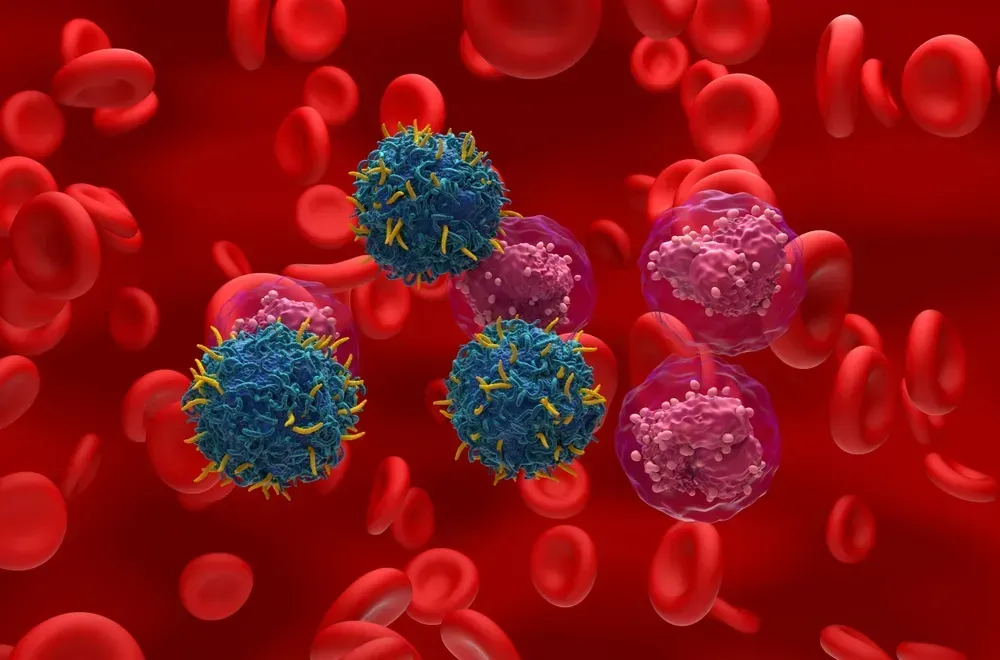Three-to-Five Years: It’s Not a Looming Sentence Anymore

“Three-to-five years.” Was that part of the conversation about myeloma life expectancy when you or a loved one were told about a myeloma diagnosis? If yes, I’ll bet it wasn’t positive. Probably something closer to stunned and speechless.
Or was it the first thing that caught your eye when you Googled “myeloma”? If you still think that way, consider doing two things…immediately.
First, find a myeloma specialist or ask your physician to consult with one—they’re happy to do it. And if they’re not, that’s even more reason to find one soon.
You’ll quickly realize that 3-5 years means something very different to professionals working in myeloma. It’s about anticipation and optimism; it's about what the near future holds.
Ask a top myeloma expert what 3-5 years means to them, and it will be anything but pessimistic. Professionally, they’re pretty close to being those giddy young kids who can’t wait to find new surprises under their Christmas trees every year.
And the presents just seem to be getting better. They just need to be shared more widely.
Second, consider starting a HealthTree Cure Hub profile so that you can better understand your disease and how to access the hopefulness and discard the pessimism of 3-5 years.
Any talk of myeloma still being in the Dark Ages is at best misinformed. Especially for those of us who know how far this community has come since the news came out in 1998 that thalidomide was shown to be the first drug treatment ever to directly attack the myeloma cell.
Moreover, myeloma is by no means a death sentence today; patients are living with it. Quite successfully and actively in many cases.
Experts Discuss Newly Diagnosed Multiple Myeloma Issues and Why Physicians Are Optimistic About Newly Diagnosed Myeloma, are by far the two most popular of 48 Myeloma Round Table web pages we have posted to date. Both programs reflect the growing confidence experts have about myeloma as well as the trajectory of new drug development that are changing how the disease is being treated.
Among the talks in these two programs, Leif Bergsagel MD from the Mayo Clinic, one of the elder statesmen in myeloma, explains the history of myeloma and how the past decade was unimaginable just ten years earlier. All the other talks and the discussion rounds underscore how early treatment and procedures are getting more refined and predictable.
Or, if you want to get an overview of the big picture of myeloma, then it doesn’t get better than Jenny Ahlstrom’s talk with Drs. Rafael Fonseca and Ola Landgren, two of the most forward-thinking experts in myeloma and founding members of the HealthTree Foundation’s Scientific Advisors.
To delve deeper in the topics, check out other Round Table programs, HealthTree University videos, or consider joining a Chapter for online meetings that fit for you. And don’t forget to keep your HealthTree Cure Hub profile current. We have a team to help you.
Three-to-five years can’t come fast enough for the top myeloma experts. Because they know there’s more progress to be made—maybe even some cures—in the 3-5 years after that, and the 3-5 after that, and the 3-5…
“Three-to-five years.” Was that part of the conversation about myeloma life expectancy when you or a loved one were told about a myeloma diagnosis? If yes, I’ll bet it wasn’t positive. Probably something closer to stunned and speechless.
Or was it the first thing that caught your eye when you Googled “myeloma”? If you still think that way, consider doing two things…immediately.
First, find a myeloma specialist or ask your physician to consult with one—they’re happy to do it. And if they’re not, that’s even more reason to find one soon.
You’ll quickly realize that 3-5 years means something very different to professionals working in myeloma. It’s about anticipation and optimism; it's about what the near future holds.
Ask a top myeloma expert what 3-5 years means to them, and it will be anything but pessimistic. Professionally, they’re pretty close to being those giddy young kids who can’t wait to find new surprises under their Christmas trees every year.
And the presents just seem to be getting better. They just need to be shared more widely.
Second, consider starting a HealthTree Cure Hub profile so that you can better understand your disease and how to access the hopefulness and discard the pessimism of 3-5 years.
Any talk of myeloma still being in the Dark Ages is at best misinformed. Especially for those of us who know how far this community has come since the news came out in 1998 that thalidomide was shown to be the first drug treatment ever to directly attack the myeloma cell.
Moreover, myeloma is by no means a death sentence today; patients are living with it. Quite successfully and actively in many cases.
Experts Discuss Newly Diagnosed Multiple Myeloma Issues and Why Physicians Are Optimistic About Newly Diagnosed Myeloma, are by far the two most popular of 48 Myeloma Round Table web pages we have posted to date. Both programs reflect the growing confidence experts have about myeloma as well as the trajectory of new drug development that are changing how the disease is being treated.
Among the talks in these two programs, Leif Bergsagel MD from the Mayo Clinic, one of the elder statesmen in myeloma, explains the history of myeloma and how the past decade was unimaginable just ten years earlier. All the other talks and the discussion rounds underscore how early treatment and procedures are getting more refined and predictable.
Or, if you want to get an overview of the big picture of myeloma, then it doesn’t get better than Jenny Ahlstrom’s talk with Drs. Rafael Fonseca and Ola Landgren, two of the most forward-thinking experts in myeloma and founding members of the HealthTree Foundation’s Scientific Advisors.
To delve deeper in the topics, check out other Round Table programs, HealthTree University videos, or consider joining a Chapter for online meetings that fit for you. And don’t forget to keep your HealthTree Cure Hub profile current. We have a team to help you.
Three-to-five years can’t come fast enough for the top myeloma experts. Because they know there’s more progress to be made—maybe even some cures—in the 3-5 years after that, and the 3-5 after that, and the 3-5…

about the author
Greg Brozeit
Greg Brozeit has been with the HealthTree Foundation since 2015 when he began volunteering for the Myeloma Crowd. Prior to that he worked with Dr. Bart Barlogie and the International Myeloma Foundation, inaugurating many myeloma patient advocacy and education programs.
More on Navigating Your Health
Trending Articles
Upcoming Events




Get the Latest Multiple Myeloma Updates, Delivered to You.
By subscribing to the HealthTree newsletter, you'll receive the latest research, treatment updates, and expert insights to help you navigate your health.
Together we care.
Together we cure.
3x Faster.












